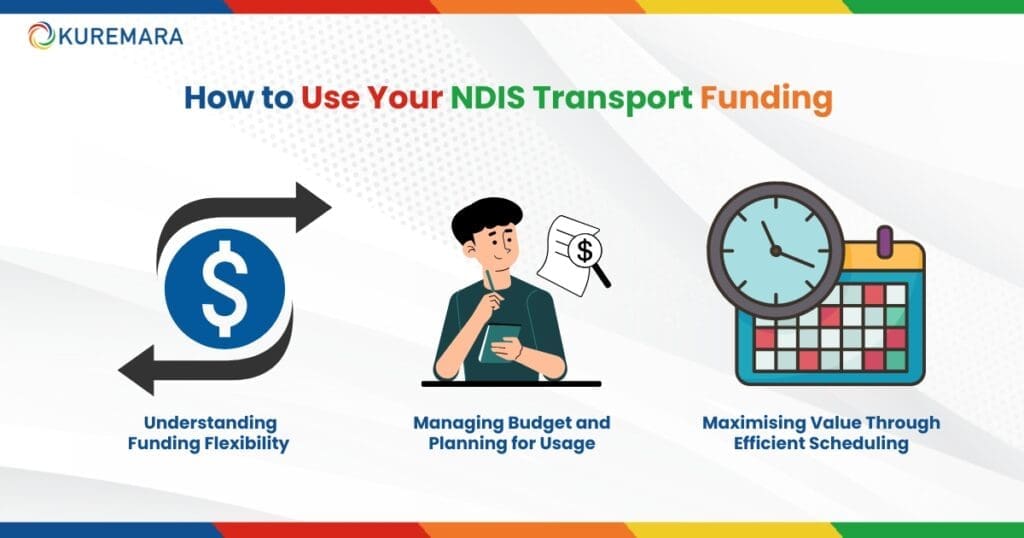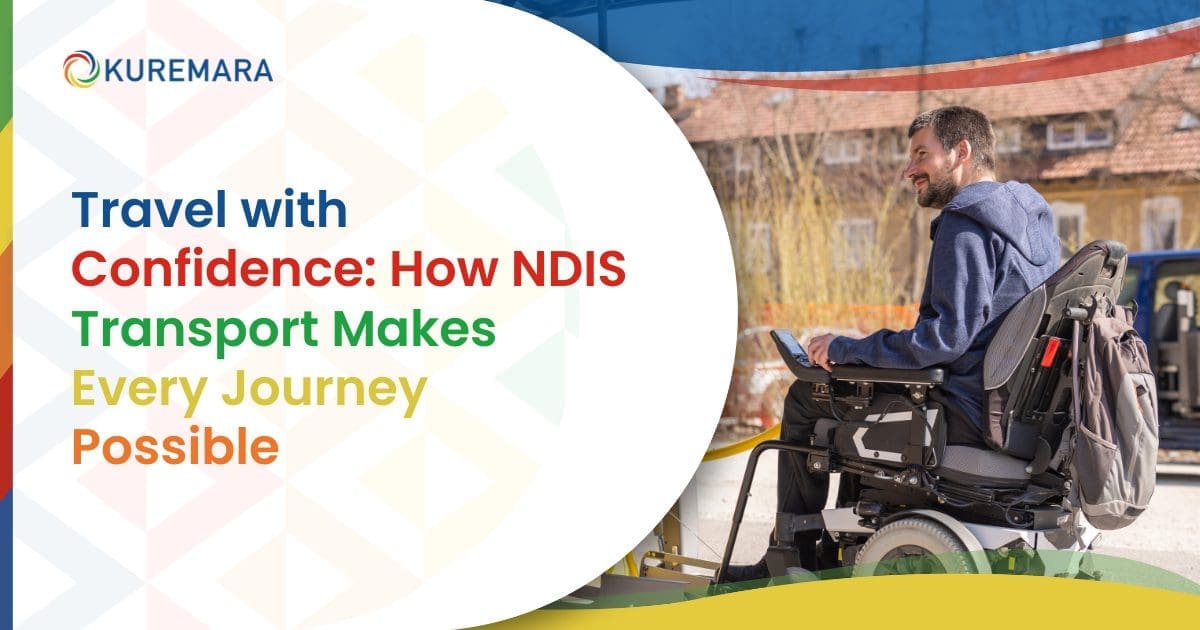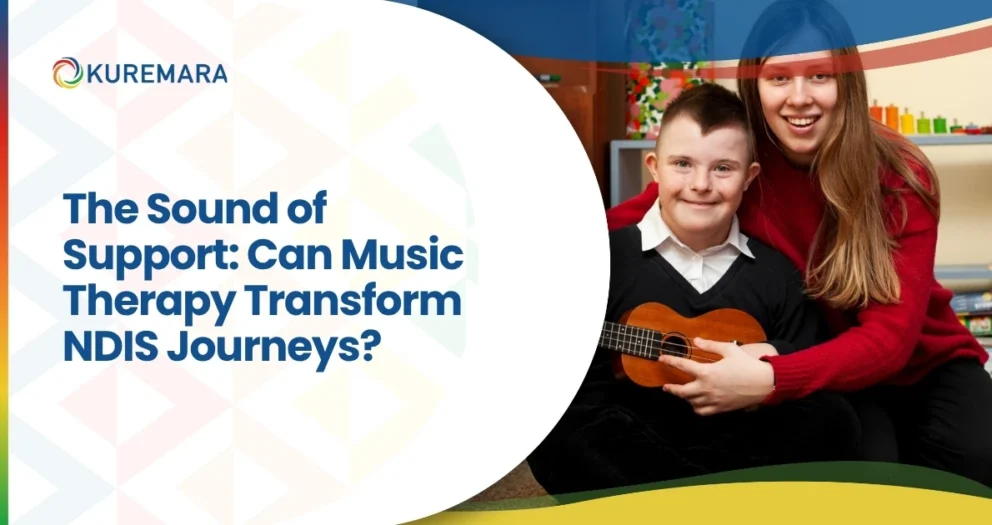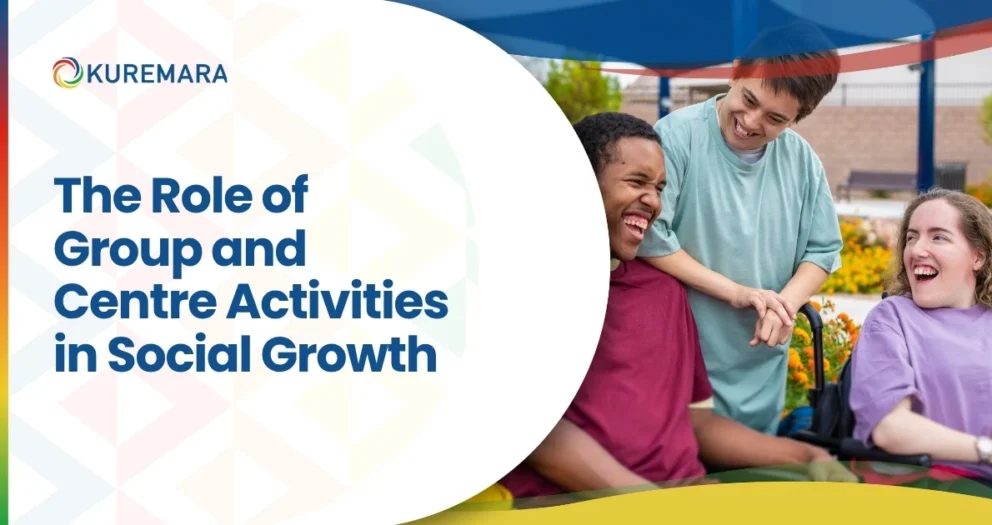The National Disability Insurance Scheme (NDIS) offers this transportation service under its provisions to facilitate overcoming the movement barriers of an individual. The provision of opportunities for the participant for journeys at work, education, health appointments, and social engagements in safety and accessibility is made available.
Accessible transport cannot be viewed as a privilege but a necessity. To the disabled, it becomes a means of preventing them from participating in society or isolation. A stable transport system helps people return to their communities. It builds independence, making peoples’ lives better.
A core objective of NDIS transport funding is to ensure that a participant receives easy-to-access transportation services for people with disabilities that are tailored according to their needs. That has helped the system in addressing mobility issues related to equity, inclusion, and independence. In this blog, we will attempt to understand the scope of NDIS transport, as it has been affecting the daily lives of participants in NDIS, and what might have rendered it superior.
Understanding the Scope of NDIS Transport
The NDIS provides transport support that suits the needs of a person having a disability, hence equipping them to lead an independent life as well as fully engage within their community. Services included in this are assistance with public, private, and support worker-driven transport, hence access to many situations.
Who Can Access NDIS Transport Support?
Eligibility to receive disability transport services comes when the participant has reduced mobility and requires assistance. The NDIS decides if transport assistance is necessary for accessing daily activities and other basic services.
Benefits of NDIS Transport for Participants
Increased Independence and Autonomy
The NDIS transport unlocks the access gates of independent access for people with disabilities. Provided with trusted and tailored transport options, participants can attend work, school, or appointments without having to rely on family or their friends’ support. This enables an increase in reliance and personal growth.
Enhanced Social and Community Participation
Accessible transportation means access to the community giving him/her opportunities to attend and participate in a social event or visit their friend or social group. This can help immensely in breaking isolation, bringing inclusion, and assisting in an improved mental condition because they belong and have a purpose.
Access to Essential Services and Daily Activities
NDIS transport facilitates a participant to carry out his or her daily activities, such as going for health check-ups or shopping. Transport services for people with disabilities bridge the mobility gap that gets them easily and conveniently involved in their day-to-day affairs. Such involvement leads to a better general quality of life and daily life.
Types of Transport Solutions Available

Public Transport Assistance
Training in travel and assistance to individuals who can use safe public transport, and possible benefits derived from the development of their confidence and skills in planning routes, reading timetables and safe boarding of buses, trains and trams to use the cheapest and safest travel modes accessible public transport has to offer
Private and Community Transport Services
While most people like personal or neighbourhood-based services, like accessible taxis, private hire vehicles, or community transport, these allow some needs to be met-for example, wheelchair access, and boarding assistance. The community transport service is usually provided to accommodate group outings so that social and even medical trips have space for flexibility.
Support Worker-Driven Transport
Support workers engage if independent travel is hindered because of mobility problems to deliver direct support. They take the driving of their participants to scheduled critical appointments, accompany them to places during the trips, and ensure safety in the whole process. This is best suited for participants with complex needs where people need bespoke, direct support.
Levels of NDIS Transport Funding
Core Transport Funding Levels
NDIS offers three core funding levels to meet different participant needs:
- Level 1: For those participants whose transportation needs are infrequently required, such as other less regular medical appointments and community trips.
- Level 2: For those participants who need regular transportation to manage complex activity, such as daily travels to work or therapy.
- Level 3: High-intensity transport support for those who may require it daily. This level will respond to regular and essential travelling for, but not limited to, school, health care, or employment, among others.
Beyond Core: Specialist Support and Additional Options
With accessible transport under NDIS, a person does not just find that core funding is achieved but rather various options that specialise in meeting the need – be it travel beyond ordinary forms of transport, which may even be long distances or very low frequencies. The specialised options may overcome barriers far more than their ordinary counterparts. Participants can access them with the help of their registered NDIS provider to link them to a bigger picture that increases their mobility and independence.
How to Use Your NDIS Transport Funding

Understanding Funding Flexibility
Transport funding under NDIS is programmed to accommodate the changing and fluid needs of the participant. The flexibility allows every participant to allocate funding levels against their peculiar mobility needs so that all their needed journeys are covered. Knowledge of the level of funding you qualify for-that is, basic, regular, or high intensity-will go a long way in proper planning and utilisation of funding.
Managing Budget and Planning for Usage
Careful budgeting is essential in stretching transport funding till the very end of your plan. Identify your major journeys, such as work commutes, health appointments, or educational commitments. These must be prioritised so that funding is spent on critical journeys. Monitoring usage and remaining funds prevent overspending and could ensure support lasts until your next funding review.
Maximising Value Through Efficient Scheduling
Strategic planning can also stretch the budget further. Try to combine trips when possible to save on cost or avail of group transport services offered by NDIS transport providers, which can be less expensive. Proper planning will ensure that the cost efficiency is guaranteed plus reliable, on-time transport for all your needs.
How NDIS Transport Services support Daily Life
Travelling for Work and Education
Disability transport services under NDIS becomes such a goldmine for participants seeking to pursue education or work. It reduces barriers to traveling so that participants can get to school, training, or work without any care. The accessible vehicles of the NDIS transport service ensure that mobility aids are accommodated and make the journey both safe and hassle-free.
Access to Healthcare and Rehabilitation
Comprehensive transportation is an elementary one towards facilitation so that it can access health and rehabilitation services. Taking or visiting a doctor or therapists for routine check-up treatment or critical appointments, a disability transport will ensure time-bound treatment services for participants. With such a help overall health and well-being are achieved without bothering about transportation.
Community and Social Events
NDIS transport also fosters social inclusion because it is easier to go to community functions, visit friends or engage in any other activity. There is therefore a need to plan-pre-booking accessible services in adequate time and informing the providers of specific requirements so that traveling turns out to be without hassle that will give the participant a level of confidence with regard to participation within their communities.
Ensuring Comfort and Safety in NDIS Transport

Vehicle Accessibility Features
Accessible vehicles are essential to a comfortable and safe journey. Features which may include wheelchair ramps, lifts, handrails, and spacious interiors ensure participants can board, travel, and alight with ease. Ensure that your selected NDIS transport provider offers vehicles that meet your specific needs.
Vehicle Safety Standards and Checks
It ensures that people with disabilities safely get transport. Maintenance quality assurance and safety checks and following all requirements of the Australian safety standards ensure a safe ride. Always choose providers who commit to very high standards of safety.
Safety Practices and Driver Training
Trained drivers make a journey safe and comfortable. The service providers must train their drivers in first aid, disability assistance, and defensive driving techniques. The competencies allow the driver to take participants along while making accommodations for participants’ needs.
Emergency Support Services
The proper operators have procedures in place for emergencies with examples such as roadside support immediate access and lines of communication are open. Ask your transportation provider what they do in an emergency.
Coordinating with Drivers and Transport Providers
Communication is key to a more seamless process. To prevent misunderstandings, inform the driver of your accessibility needs, required routes, and specific needs before leaving.
Additional Travel Tips
Always carry essential items like medical supplies or emergency contacts. Plan your trips, allowing time for unforeseen delays, to ensure a stress-free journey.
Role of Support Workers in NDIS Transport
How Support Workers Facilitate Travel
Support workers are very central in supporting safe and easy travels to NDIS participants. In preparation of routes, they ensure that the route taken is the most accessible and convenient. Support workers give other support to participants at boarding, travel, and getting off stages, giving some confidence and independence.
Key Responsibilities During Transport
During journeys, support workers manage participant safety, aid in mobility equipment, and address any concerns. Their role goes beyond logistics; they also give emotional reassurance to the participants, making them feel comfortable. Another feature of this role is checking vehicle safety and following up on transport guidelines.
Training Requirements for Support Workers in Transport Assistance
Support workers provide trainings that specialise in the diversity of needs that participants have. Such qualifications include mobility support, first aid, and professional communication. These qualifications enable them to respond to medical emergencies, meet, and face challenges and deliver positive travel experiences tailored to a participant’s unique requirements.
Legal Rights and Responsibilities on NDIS Transport
The National Disability Insurance Scheme allows for fundamental support for its participants, including transportation. Such participation involves clear legal rights and responsibilities for the right process and fair conditions, safety, and accountability of all.
Transport Rights of NDIS Participants
The NDIS participants have a right to receive safe, respectful, and responsive services. Suppliers must function within the legal and ethical conditions that ensure access and inclusion. The participants have rights to transparent communication in terms of time, price, and services and freedom to choose providers who relate to their preferences.
Responsibilities of NDIS Transport Providers
Transport operators play an enormous role in maintaining accessibility. They are legally bound to ensure that the vehicles they operate are well maintained and meet access requirements of variously abled individuals. Transparency over cost, keeping commitments, and providing service is a great responsibility that fosters trust and reliability.
Complaint Reporting and Resolution
Besides, in case of a concern, participants are allowed to raise complaints with the NDIS Commission. Furthermore, they can resolve grievances through their service agreements. Such practices will make an individual answerable to others and dispute resolution will be effective. Such rights for NDIS participants are protected in this case. That a system is promoted for respect and equity in ensuring rights and responsibilities enables the person to uphold such a system.
Selecting the Right Transport Provider
The selection of the best NDIS transport agency is vital in ensuring that services are safe, reliable, and comfortable as per your NDIS travel needs. Careful consideration on the provider’s credentials, communication, and quality of service can easily make a difference on the experience of service delivery.
What to Look for in a NDIS Transport Provider
Relevant expectations
A reliable NDIS transport service provider would have a well-defined pricing service to offer with flexibility to fit your unique needs and a proven track record in safety. Identify the providers with good reviews, convenient vehicle options, and clear policies with regards how they intend to deal with unexpected eventualities. Their willingness to seek an understanding of individual needs is a sure sign of reliability.
Questions to Ask Before Hiring a Transport Service
It is crucial to ask some thought-provoking questions before arriving at a decision. Are the disability-friendly vehicles ready with accessible infrastructure? Do drivers have the qualification required along with NDIS-specific training for transportation services disabled? Is there a proper procedure in case of an emergency even on a last-minute change of plans? All these questions will help you check how the provider meets your expectations and requirements.
Importance of Safety, Reliability, and Flexibility
There are qualities one would expect from a transport provider: safety, reliability, and flexibility in the mode of transport. They should guarantee your safety, keep promises every time, and accommodate your changing schedule when needed. Choosing a provider who has all these qualities will guarantee a NDIS transport experience without stress.
Technology in NDIS Transport
It has now altered the form of NDIS transportation by making services more accessible, efficient, and centred on participants. Through these novel applications and emerging trends, participants enjoy their rides seamlessly.
Apps and Tools for Booking and Tracking Rides
Modern-day applications by NDIS make booking and tracking of rides hassle-free. Participants are also empowered to book services easily, the very same applications facilitate them to check the availability of vehicles and track live in real time where their ride is. Additional features that feature fare estimations, driver information, and route tracking make it transparent and trustable. The apps empower participants to manage their transportation autonomously, making sure the participants arrive punctually.
Digital Accessibility Features for Participants
Accessibility is among the pillars of the invention of technology in NDIS transportation. The websites are highly accessible with features such as screen readers and adjusted font size, making it easier for participants with different abilities to navigate. Such tools would help people with disabilities navigate the technology without any impediment, instilling a sense of independence and confidence. The other form of accessibility is through multiple languages and voice commands.
Future Trends in Technology-Enabled Transport
The future of technology with NDIS transportation looks bright and promises many new things. Autonomous vehicles can meet clients’ needs by offering door-to-door service, which is supposed to change the game altogether. Moreover, AI deployment is expected to make wait times and costs shorter through enhanced route optimisation. Smart wearable devices may make real-time alerts and communications for safer rides and efficiency possible. Technology in the transport of NDIS is more than an addition; it allows a participant independence and power.
Conclusion
Transformations come for the participants of NDIS transport through the Registered NDIS Provider to achieve independence and fulfillment in their lives. From safe and accessible means of travel to harnessing innovative technologies, this is a base for inclusion and mobility. This ensures the rights of participants toward quality services and the responsibilities that service providers must continue to hold up high standards towards such a system.
All being well, having chosen a suitable transport provider, and the right questions asked, participants can fashion an experience to suit their own needs. And, of course, what added convenience and independence ‘user-friendly’ apps, and digital access features bring technology, future innovations will promise greater possibilities.
NDIS transport brings new experiences for the participant. But at every stage, the system ensures that the participant assesses their choices concerning mobility and maximises one’s available resource options. Proper support coupled with proper tools make traveling within the NDIS framework not a necessity to be feared but an opportunity in which to find confidence, power, and a life associated with others.
 care@kuremara.com.au
care@kuremara.com.au





